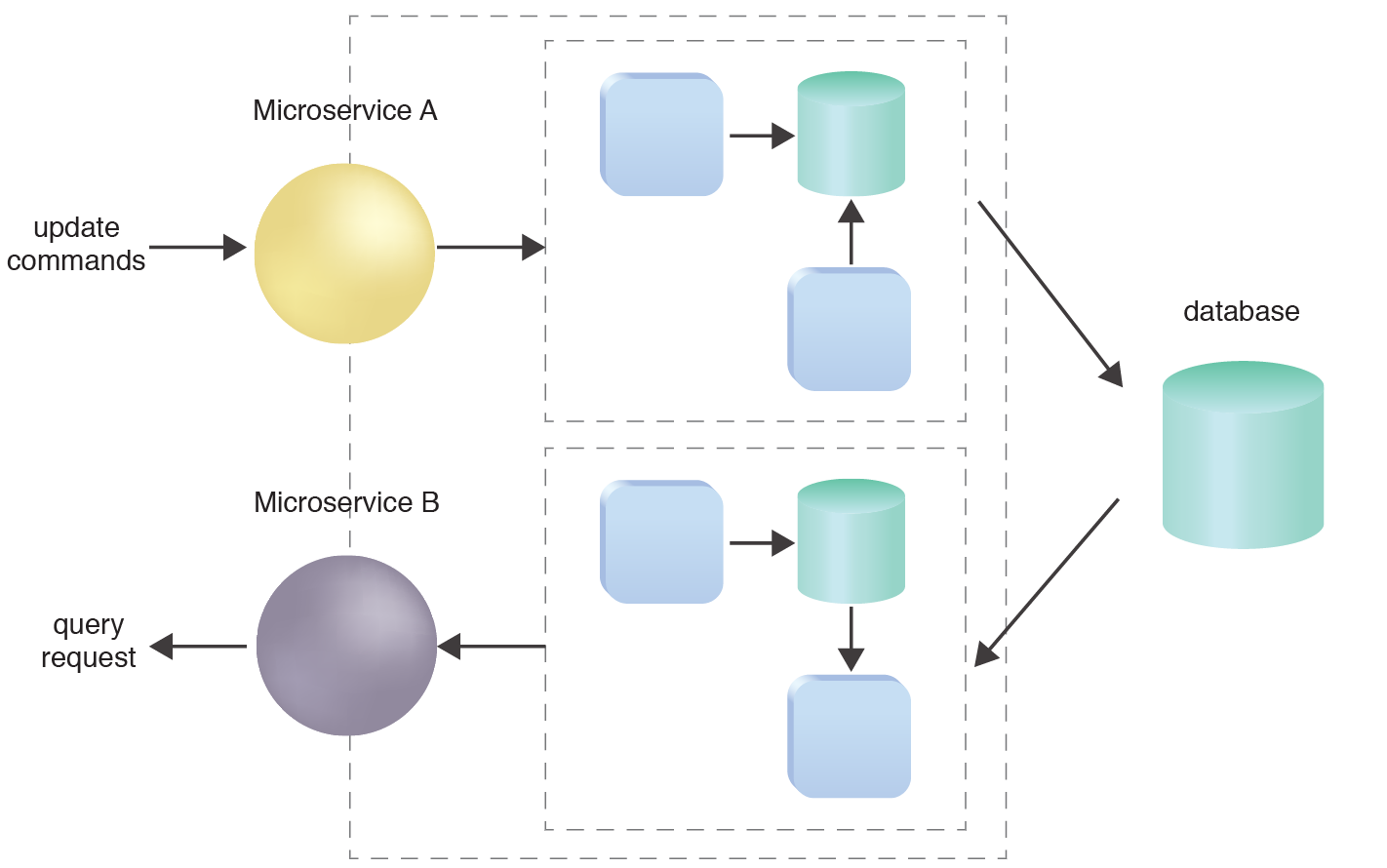Microservice and Containerization Patterns > Fundamental Microservice and Container Patterns > Micro Task Segregation
Micro Task Segregation (Erl, Naserpour)
How can data access functions be organized into micro tasks in order to preserve the granular functional scope of a microservice?

Problem
Solution
Application
A design approach is carried out whereby the data access functions are separated into micro tasks that are then allocated to multiple microservices. This supports the application of the Micro Focus principle by preserving the single purpose scope of each microservice.

Commands and queries are sent to the database through the two fine-grained microservices.
This pattern is applied by focusing on the design of the microservice API, as explained in the complete pattern description.
This pattern is covered in Module 10: Advanced Microservice Architecture & Containerization..
For more information regarding microservice and containerization courses and accreditation,
visit the Microservice Architect Certification program page..
